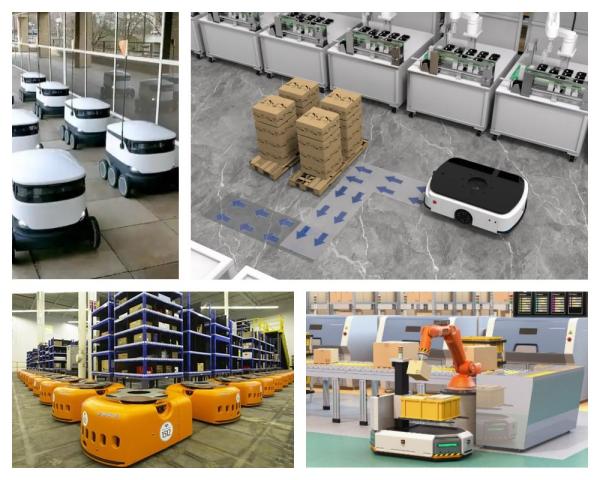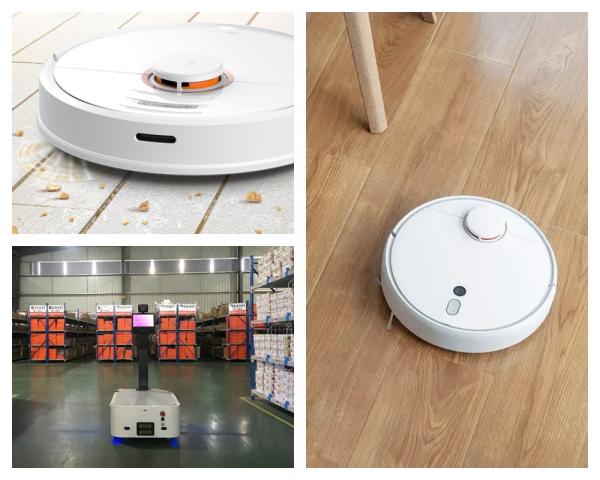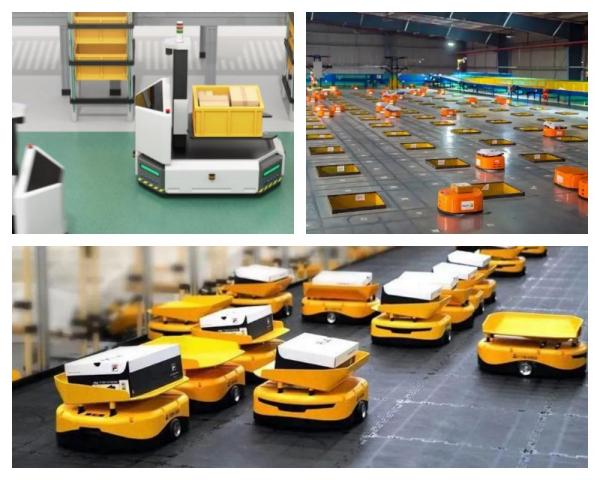Fisheye lenses have an ultra-wide field of view and can capture a wide range of environments, but there is distortion. Fisheye stitching technology can fuse and process images taken by multiple fisheye lenses, eliminate distortion through correction processing, and finally form a panoramic picture. It has a wide range of applications in many industries. Fisheye stitching technology also has important applications in robot navigation.
Fisheye stitching technology provides the robot with panoramic environment perception capability by integrating the ultra-wide-angle vision of multiple fisheye lenses, effectively solving the problems of limited vision and many blind spots in traditional visual navigation. Its core applications in robot navigation are as follows:
1.Environmental perception and map construction
Fisheye stitching technology can provide a 360° ultra-wide-angle and wide-viewing environment view, helping robots quickly build high-resolution panoramic maps and fully perceive the surrounding environment, which helps them accurately locate and plan paths and avoid blind spots, especially in narrow spaces (such as indoors, warehouses) or dynamic environments.
In addition, the fisheye image stitching algorithm achieves high-precision image fusion through feature point extraction, matching and optimization, providing a stable navigation environment for the robot.
Through the stitched panoramic images, the robot can perform SLAM (simultaneous localization and mapping) more efficiently, taking advantage of the large field of view of the fisheye lens to achieve high-precision two-dimensional navigation map construction and locate its own position.
Fisheye stitching technology helps robots build panoramic maps
2.Obstacle detection and avoidance
The panoramic image stitched using fisheye can cover a 360° area around the robot, and can detect obstacles around the robot in real time, such as obstacles on the top or under the chassis, including objects at close and far distances. Combined with deep learning algorithms, the robot can identify static or dynamic obstacles (such as pedestrians and vehicles) and plan obstacle avoidance paths.
In addition, for the distortion of the edge areas of the fisheye image, a correction algorithm (such as inverse perspective mapping) is needed to restore the real spatial relationship to avoid misjudging the position of obstacles. For example, in indoor navigation, the panoramic image captured by the fisheye camera can help the robot adjust its course in real time and avoid obstacles.
3.Real-time performance and adaptation to dynamic environments
Fisheye stitching technology also emphasizes real-time performance in robot navigation. In a mobile or dynamic environment, fisheye stitching supports incremental map updates (such as DS-SLAM) and can respond to environmental changes quickly in real time.
In addition, panoramic images can provide more texture features, improve the accuracy of loop closure detection, and reduce cumulative positioning errors.
Fisheye stitching technology also emphasizes real-time
4.Visual positioning and path planning
Through the panoramic images stitched from fisheye images, the robot can extract feature points for visual positioning and improve positioning accuracy. For example, in an indoor environment, the robot can quickly identify the layout of the room, the location of the door, the distribution of obstacles, etc. through panoramic images.
At the same time, based on the panoramic view, the robot can plan the navigation path more accurately, especially in complex environments such as narrow corridors and crowded areas. For example, in a warehouse environment with multiple obstacles, the robot can find the fastest path to the target location through panoramic images while avoiding collisions with obstacles such as shelves and goods.
5.Multiple robots collaborative navigation
Multiple robots can share environmental data through fisheye stitching technology, build distributed panoramic environmental maps, and coordinate navigation, obstacle avoidance, and task allocation, such as cluster robots in warehousing and logistics.
Combined with the distributed computing framework and using panoramic feature point matching, each robot can independently process local fisheye images and fuse them into a global map, realizing relative position calibration between robots and reducing positioning errors.
Multiple robots achieve collaborative navigation through fisheye stitching technology
Fisheye stitching technology is also used in special scenarios, such as low-speed autonomous driving monitoring and safe driving assistance systems. Through fisheye image stitching, the system can generate a bird’s-eye view to help drivers or robots better perceive the surrounding environment.
In addition, fisheye stitching technology can also be used in combination with other sensors (such as lidar, depth sensors, etc.) to further improve the performance of the navigation system.
In short, fisheye stitching technology is widely used in robot navigation, especially in scenarios that require large-scale environmental perception and real-time positioning. With the continuous updating and development of technology and algorithms, the application scenarios of fisheye stitching technology will be further expanded, and its application prospects are broad.
Final Thoughts:
If you are interested in purchasing various types of lenses for surveillance, scanning, drones, smart home, or any other use, we have what you need. Contact us today to learn more about our lenses and other accessories.
Post time: Jul-01-2025






